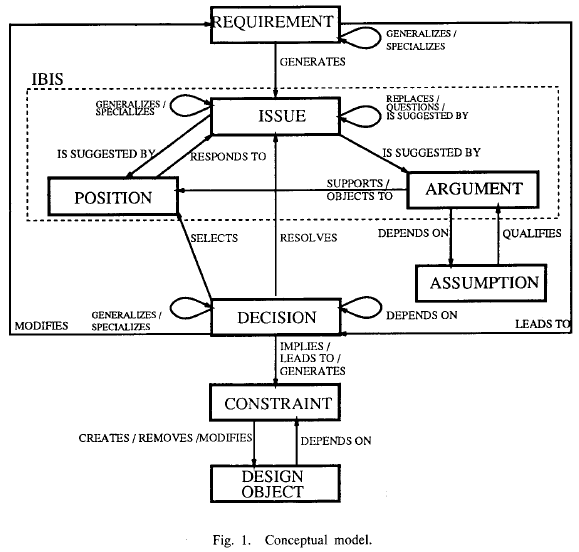Designing software and websites is not at all like designing a building or city planning. This model is quite useful to help understand the process. I found this preparing for class.
Here is a summary of the model from the article:
Summary: Requirements engineering is an iterative exercise; often, the purpose of going through the exercise is to define the problem itself, and in the process, refine requirements. That is, an initially fuzzy requirement gets clarified through discussion, leading to other, more specific requirements. While the model has been motivated by requirements engineering, its components are generic enough to be applicable across various phases of the life cycle.
The model is from Ramesh and Dhar 1992
, based on the IBIS model by Kunz and Rittel. References below.
Kunz, W., & Rittel, H. W. J. (1970). Issues as Elements of Information Systems. Institute of Urban & Regional Development, University of California.
Ramesh, B., & Dhar, V. (1992). Supporting systems development by capturing deliberations during requirements engineering. Software Engineering, IEEE Transactions on, 18(6), 498-510. doi: 10.1109/32.142872.


That summary is so, so true. It’s one of the reasons I like Web development and content management. There’s absolutely no way to design a site, for example, unless you have the content. But you also can’t come up with all the content, unless you have an idea of what the design or form will be. It really turns linear time and cause-and-effect relationships upside down, and at the moment, gets me thinking about God and the way he views time. I wonder how he created the Earth . . .
Good grief! We’ll have to talk about this offline. Or maybe I should just go read some Faulkner . . .